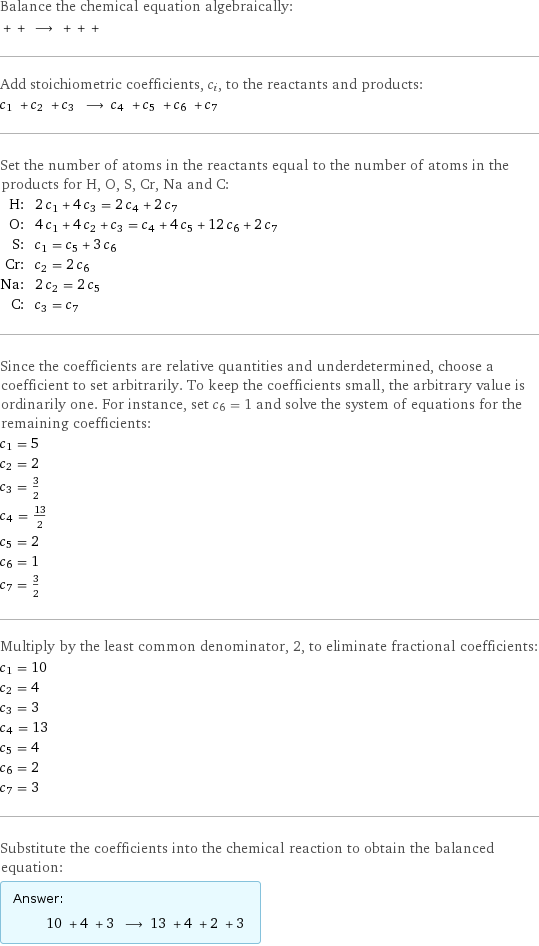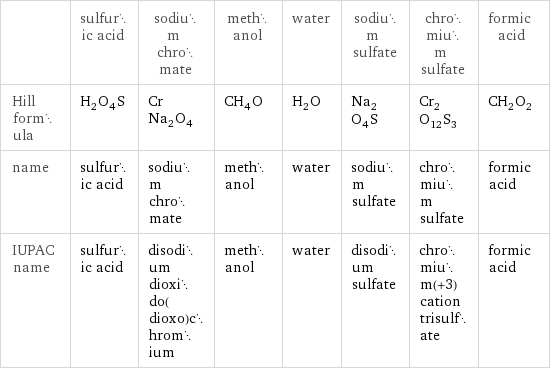Input interpretation

sulfuric acid + sodium chromate + methanol ⟶ water + sodium sulfate + chromium sulfate + formic acid
Balanced equation

Balance the chemical equation algebraically: + + ⟶ + + + Add stoichiometric coefficients, c_i, to the reactants and products: c_1 + c_2 + c_3 ⟶ c_4 + c_5 + c_6 + c_7 Set the number of atoms in the reactants equal to the number of atoms in the products for H, O, S, Cr, Na and C: H: | 2 c_1 + 4 c_3 = 2 c_4 + 2 c_7 O: | 4 c_1 + 4 c_2 + c_3 = c_4 + 4 c_5 + 12 c_6 + 2 c_7 S: | c_1 = c_5 + 3 c_6 Cr: | c_2 = 2 c_6 Na: | 2 c_2 = 2 c_5 C: | c_3 = c_7 Since the coefficients are relative quantities and underdetermined, choose a coefficient to set arbitrarily. To keep the coefficients small, the arbitrary value is ordinarily one. For instance, set c_6 = 1 and solve the system of equations for the remaining coefficients: c_1 = 5 c_2 = 2 c_3 = 3/2 c_4 = 13/2 c_5 = 2 c_6 = 1 c_7 = 3/2 Multiply by the least common denominator, 2, to eliminate fractional coefficients: c_1 = 10 c_2 = 4 c_3 = 3 c_4 = 13 c_5 = 4 c_6 = 2 c_7 = 3 Substitute the coefficients into the chemical reaction to obtain the balanced equation: Answer: | | 10 + 4 + 3 ⟶ 13 + 4 + 2 + 3
Structures

+ + ⟶ + + +
Names

sulfuric acid + sodium chromate + methanol ⟶ water + sodium sulfate + chromium sulfate + formic acid
Chemical names and formulas

| sulfuric acid | sodium chromate | methanol | water | sodium sulfate | chromium sulfate | formic acid Hill formula | H_2O_4S | CrNa_2O_4 | CH_4O | H_2O | Na_2O_4S | Cr_2O_12S_3 | CH_2O_2 name | sulfuric acid | sodium chromate | methanol | water | sodium sulfate | chromium sulfate | formic acid IUPAC name | sulfuric acid | disodium dioxido(dioxo)chromium | methanol | water | disodium sulfate | chromium(+3) cation trisulfate | formic acid